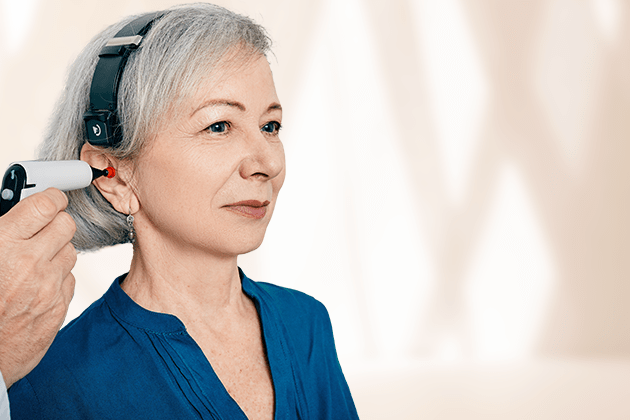Otorhinolaryngology
Otorhinolaryngology (ENT)(Ear Nose Throat)
What is Otolaryngology?
Ear Nose Throat (ENT) is a medical specialty, commonly referred to as "Otolaryngology." The ENT specialty is established to study, diagnose, and treat various anatomical structures in the head, neck, and face, along with their associated functions. This medical field focuses on a wide range of expertise, addressing diseases related to the ear, nose, throat, head, and neck regions, as well as functions such as hearing, balance, speech, and swallowing.
What do Otolaryngologists Treat?
ENT specialists undergo additional training in this field after completing their general medical education. Throughout this process, they acquire in-depth knowledge of the anatomy, physiology, and pathology of the ear, nose, and throat. ENT specialists possess a comprehensive set of medical knowledge and skills to assess patient complaints, make accurate diagnoses, and formulate effective treatment plans.
Ear Nose Throat (ENT) Diseases
Ear Diseases
- Ear Infections
- Hearing Loss
- Tinnitus (Ringing in the Ear)
- Balance Issues
- Ear Drum Problems
- Ear Disorders
- Meniere's Disease
- Ear Cysts and Tumors
- Otosclerosis
- Genetic Diseases Leading to Hearing Loss
Nose Diseases
- Sinusitis
- Nasal Polyps
- Allergic Rhinitis
- Deviated Septum
- Nosebleeds
- Nasal Bone Fractures
- Nasal Tumors
- Enlarged Nasal Turbinates (Concha Hypertrophy)
Throat Diseases
- Pharyngitis
- Tonsillitis (Inflammation of Tonsils)
- Laryngitis
- Reflux Disease
- Throat Cancer
- Epiglottitis
- Throat Spasms
- Throat Cysts and Polyps
- Tension in Throat Muscles (Vocal Cord Dysfunction)
- Throat Ulcers
- Lymphoma in the Throat
- Fungal Infections in the Throat
- Throat Tumors Throat Trauma and Foreign Bodies
Head and Neck Diseases
- Head and Neck Tumors
- Thyroid Diseases
- Facial Paralysis
- Difficulty Swallowing
Ear Nose Throat (ENT) Diagnostic Methods
Physical Examination: ENT specialists carefully examine the ear, nose, and throat regions during a physical examination. Methods such as ear inspection, nasal examination, and oral and throat examinations are used.
Otoscopy (Inner Ear Examination): A method used for inner ear examination, utilizing a special instrument called an otoscope to visualize the ear drum and the external ear canal.
Rhinoscopy (Inner Nose Examination): A method used to examine the inside of the nose. Specialists often use a nasal speculum and a light source to view the nasal passages.
Laryngoscopy (Inner Throat Examination): A method used to assess the throat's interior, typically performed with instruments like a fiberoptic endoscope or laryngoscope. In some cases, a special camera may be used during throat visualization.
Hearing Tests: Various hearing tests, including audiometry, tympanometry, and auditory brainstem response (ABR) tests, are employed to evaluate hearing problems.
Allergy Tests: Skin tests or blood tests (such as the RAST test) may be conducted to assess allergic reactions related to the nose, throat, and ears.
Sinus Imaging Methods: Imaging techniques such as computed tomography (CT) or magnetic resonance imaging (MRI) may be used to evaluate sinus issues.
Voice Analysis: In cases of voice hoarseness or disorders, voice analysis can be used to assess problems with the vocal cords.
Videonystagmography (VNG): A test used to assess balance problems. The patient's eye movements are examined while moving the head into specific positions.
Polysomnography (PSG): A test used to evaluate sleep apnea or other sleep disorders. Biopsy and Examination: Biopsy may be performed on suspicious tumors or lesions, and the obtained sample can be examined under a microscope.
Doppler Ultrasonography: Used to assess the condition of blood vessels in the neck region. It can determine whether arterial or venous blood flow is normal, especially in cases of severe tinnitus.
Laser Stroboscopy: Used to examine vocal cord movements and assess issues like voice hoarseness. This method captures the vibrations of the vocal cords at high speeds.
Endoscopic Imaging: Endoscopic cameras, fiberoptic endoscopes, or microendoscopes may be used to more thoroughly examine areas inside the nose, throat, or ears.
Blog
You can read our blog posts to get more information about the treatment.
Male Rhinoplasty Turkey
In the content of this week's article; You can find answers to questions and derivatives such as male rhinoplasty doctor recommendation, male rhinoplasty prices, is male rhinoplasty more difficult?, how many cm should the ideal male nose be?, how much is male rhinoplasty? We wish you enjoyable reading.
Read MoreEthnic Rhinoplasty Turkey
This week's article is about Ethnic Rhinoplasty Turkey. We wish you a good reading.
Read More



